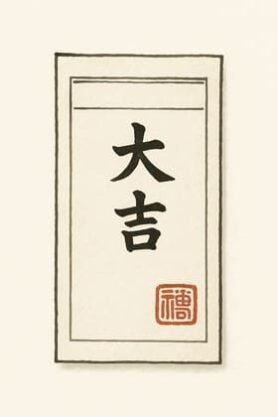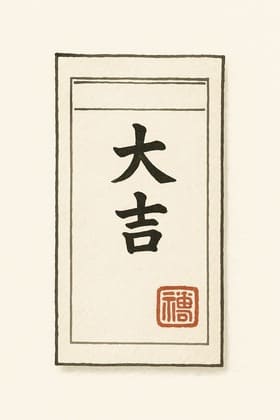
Omikuji fortune slips are a beloved part of visiting Japanese shrines and temples. These paper fortunes reveal your luck, offering insights from love to business. While many visitors tie their slips to special racks or trees at the shrine, others choose to keep them as personal charms.
1. Why Omikuji Make Great Souvenirs
Omikuji are lightweight, personal, and rich with cultural meaning. Whether you draw “great luck” (daikichi) or even “bad luck” (kyō), each slip carries a story.
In Japan, many people tie their omikuji to special racks or trees at the shrine, believing this will either “seal in” the good fortune or leave the bad luck behind. However, there’s no strict rule—you can also keep it with you as a charm.
Some travelers fold or laminate their omikuji to carry as wallet charms—turning a simple piece of paper into a lucky keepsake.
2. What Your Omikuji Means
- Daikichi (Great Luck): Excellent fortune—keep it close as a lucky charm.
- Kichi (Good Luck): Positive outcomes are likely.
- Kyō (Bad Luck): Many keep it as a protective charm, believing the misfortune has been symbolically removed.
3. Tips for Keeping an Omikuji
- Fold it carefully or laminate it for durability.
- No strict rules: It’s equally acceptable to tie the omikuji at the shrine or take it home as a personal charm.
- Embrace the story: Whatever the fortune says, it becomes part of your travel tale.
Final Thoughts
An omikuji isn’t just a slip of paper—it’s a pocket-sized piece of Japanese culture and a reminder that luck, like travel, is always an adventure.
You might also like:
🎁 11 Unusual & Creative Japanese Souvenirs for Travelers Who Want Something Different
😲 How to Turn a Japanese Festival Hachimaki into a Stylish Table Runner



